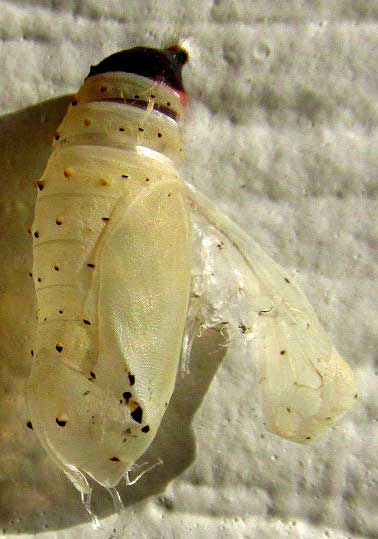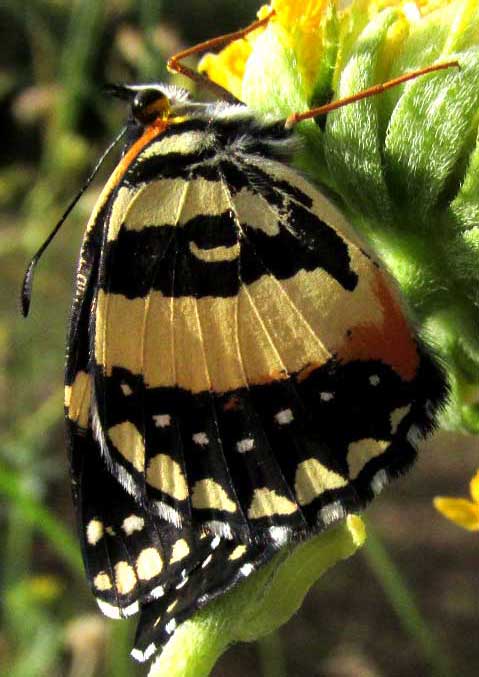Excerpts from Jim Conrad's
Naturalist Newsletter

from the August 31, 2014 Newsletter issued from the Frio Canyon Nature Education Center in the valley of the Dry Frio River in northern Uvalde County, southwestern Texas, on the southern border of the Edwards Plateau; elevation ~1750m (~5750 ft); N29.62°, W99.86°; USA
A FRESHLY EMERGED BORDERED PATCH
Arriving to continue painting a house in the valley, something dark was hanging on the white wall I'd painted only about two weeks earlier, so I went to check it out. It was a butterfly emerging from its chrysalis shell. In fact, its emergence was so far advanced that by the time my camera was out and focused, the butterfly was able to drop onto the concrete walkway below. Below, you can see the split-open, empty chrysalis case sticking to the wall:

It was a breezy morning and down on the concrete the freshly emerged butterfly was having a hard time. Its wings were so soft and pliable that the wind knocked them one way and then another, like moist cellophane. The butterfly frantically walked around in all directions as the limp wings flapped about and were dragged behind sliding on the concrete. I figured a plant was being sought to climb so he could hang upside-down with the wings dangling below as they slowly hardened. I picked up the little critter, nudged him onto a nearby Cowpen Daisy, and immediately he positioned himself beneath a flower and quieted down, the wings hanging downward, as shown below:

Even in that picture you can see that the wingtips at the very bottom are crooked and not fully deployed. Still, when I came back about half an hour later, there was no butterfly, so maybe the wings stiffened quickly, and the little being fluttered away.
Volunteer identifier Bea in Ontario tells me that this the Bordered Patch, CHLOSYNE LACINIA. At the top of this page you see a different Bordered Patch, with the wings open, photographed several months ago.
Bordered Patches are mostly a tropical species, occurring from Argentina north through Central America and Mexico to as far as southern California to here, though irregularly they migrate as far north as Colorado and western Missouri.
Caterpillars of the Bordered Patch feed on leaves of members of the Composite or Daisy Family, to which the big colony of Cowpen Daisies right next to the chrysalis belong.